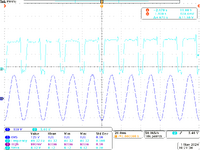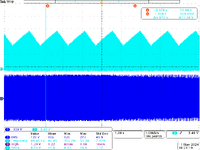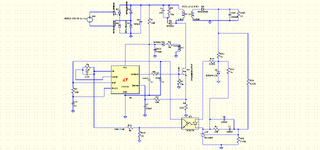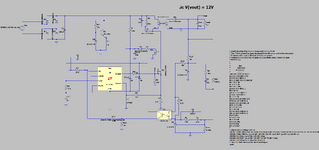sabu31
Advanced Member level 1

Hi,
I am making a 12V supply using UC3842. The charging resistor is 50k. However, as I increase the input AC voltage, the Vcc Voltage is fluctuation. What could be the issue?
The converter is a flyback configuration with output at 12V and 12W.
I am making a 12V supply using UC3842. The charging resistor is 50k. However, as I increase the input AC voltage, the Vcc Voltage is fluctuation. What could be the issue?
The converter is a flyback configuration with output at 12V and 12W.





